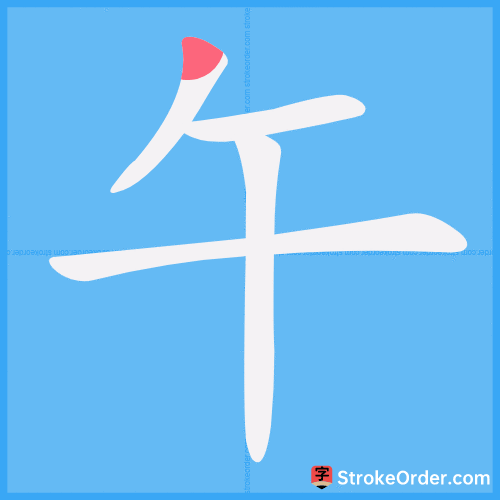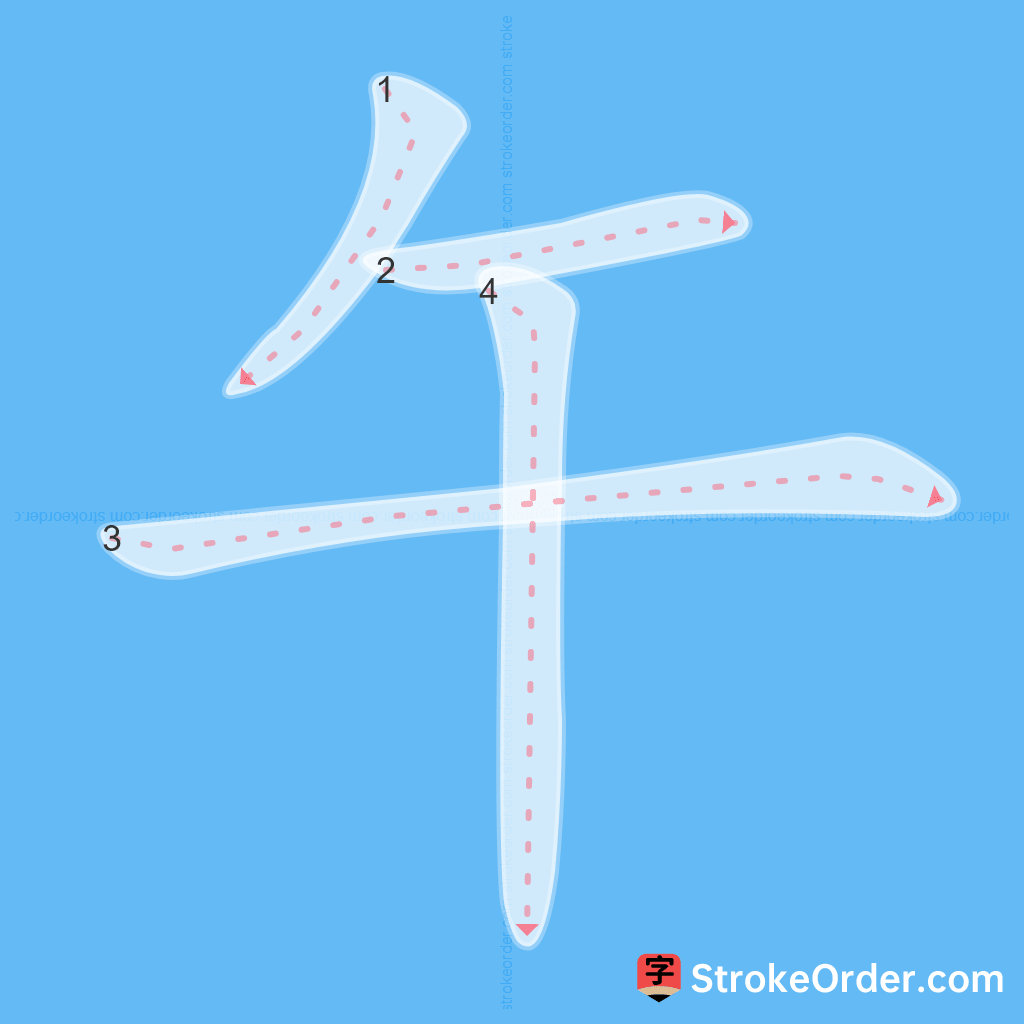午 Stroke Order
Animated Stroke Order of 午

Stroke Order Diagrams for 午

Step-by-Step Handwriting Guide for 午

Learn to Write Chinese Characters with Video Tutorials
Watch the video of writing the Chinese character "午", learn the correct stroke order (笔顺) of the character "午", and master the standard way of writing the character "午".
Free Printable Handwriting Practice with Stroke Order: 午
Printable Writing Practice Worksheet of "午" in Portrait Orientation (Tian Zi Ge)

Printable Writing Practice Worksheet of "午" in Landscape Orientation (Tian Zi Ge)

Information of 午
Pinyin
wǔ
Radical
十
Strokes
4 strokes
Usage
★★★★★
Definition
11 a.m.-1 p.m. / 7th earthly branch / noon
午 [wǔ]
名词
1. 地支的第七位,属马。
(The seventh of the twelve Earthly Branches, associated with the horse.)
2. 用于计时:午时(白天十一点到一点)。午间。午饭。午睡。午休。午夜(半夜、子夜)。
(Used for measuring time: noon (11 AM to 1 PM). lunchtime. lunch. nap. break. midnight.)
3. 古同“忤”、“迕”,逆,背。
(Anciently the same as “忤” or “迕”, meaning oppose or go against.)
形容词
1. 纵横相交。
(Crisscross.)
动词
1. 通“仵”。违反。
(To transgress; to violate.)
2. 通“迕”。抵触,相遇。
(To conflict; to meet with.)
引申义
1. 同本义(rope that is used to manage a horse)。
(Also refers to a rope used for managing horses.)
2. 与天干相配,用以纪年。
(Matched with heavenly stems for the purpose of recording years.)
3. 用以纪月,即农历五月。
(Used to denote the fifth month of the lunar calendar.)
4. 用以纪日。
(Used to denote days.)
5. 用以纪时,即十一时至十三时;正午,白天十二时。
(Used to denote time, specifically from 11 AM to 1 PM; noon, 12 o'clock during the day.)
6. 十二肖属马,因亦为马的代称。
(The twelve zodiac signs associated with the horse, thus “午” also serves as a synonym for horse.)
7. 干支逢五日午,亦特指五月初五。
(In the sexagenary cycle, the fifth day of the fifth month also specifically refers to the fifth day of the fifth lunar month.)
8. 古人以十二支配方位,午为正南,因以为南方的代称。
(In ancient times, the twelve Earthly Branches were associated with directions, where 午 corresponds to the south, thus it is used as a term for the southern direction.)
Input Method for 午
Pinyin
wu3
Wubi
tfj
Cangjie
oj
Zhengma
maed
Four Corner
80400
Unicode
U+5348
Same Pronunciation Characters